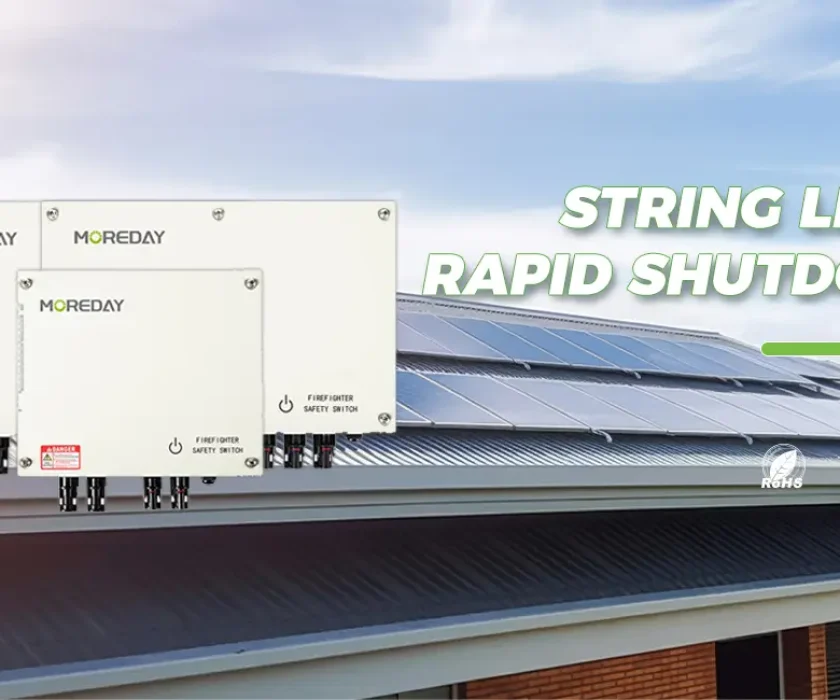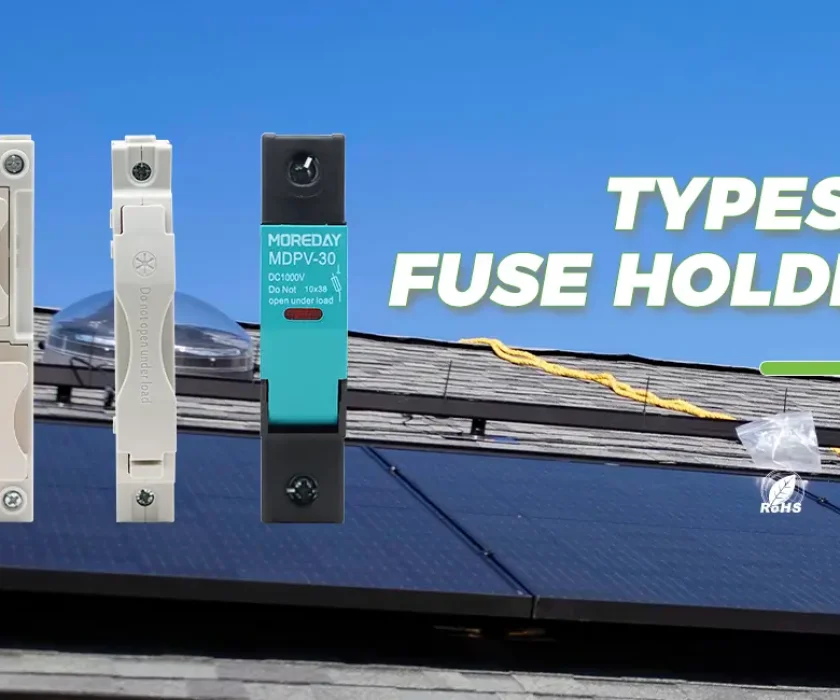Solar connectors are essential components in the photovoltaic (PV) systems that harness solar power. These small but critical pieces facilitate the electrical connections between solar panels, inverters, and other components, forming an integral part of the energy collection and distribution network. Solar connectors not only ensure a secure physical connection but also maintain the electrical continuity needed to efficiently transfer solar-generated electricity.
The effectiveness of a solar power system heavily relies on the quality and compatibility of its connectors. Given the variety of solar connectors available, each type is tailored to specific environmental conditions and installation requirements. These connectors are designed to withstand different levels of voltage and current, and they vary in their resistance to environmental factors such as UV exposure, temperature fluctuations, and moisture. The choice of the right connector directly impacts the efficiency, durability, and safety of the solar system.
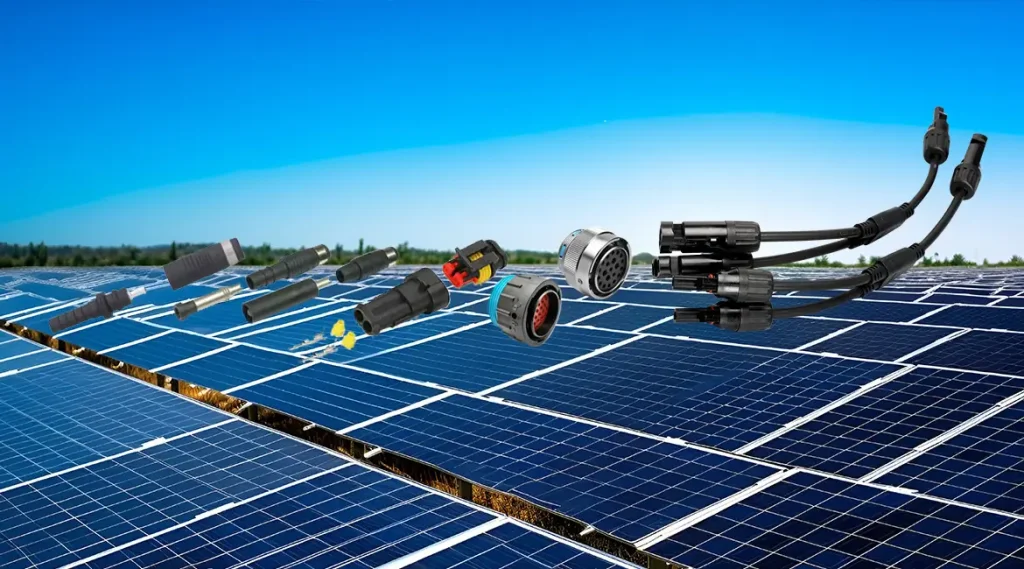

Types of Solar Connectors
MC4 Connectors
MC4 connectors are the standard in the solar industry, known for their reliability and ease of use. These connectors are designed to work with all types of solar panels and are suitable for any environment, making them a versatile choice for both residential and commercial installations. The “MC” in MC4 stands for “Multi-Contact,” with the “4” indicating a 4mm diameter contact pin, which is a common size for solar applications. MC4 connectors feature a locking mechanism that ensures a secure and stable connection that is both waterproof and dustproof. Their ability to withstand high voltages and currents, along with their durability in harsh weather conditions, makes MC4 connectors a preferred choice for solar setups worldwide.


MC3 Connectors
Before the advent of MC4 connectors, MC3 connectors were widely used in solar installations. They are similar in function to MC4 connectors but do not feature the same locking mechanism, which makes them less secure compared to their successors. MC3 connectors use a 3mm contact pin and are generally considered less robust under environmental stresses such as high winds or heavy snow loads. Although they are now largely outdated, understanding MC3 connectors can be important when dealing with older solar installations or when replacements are needed in legacy systems.
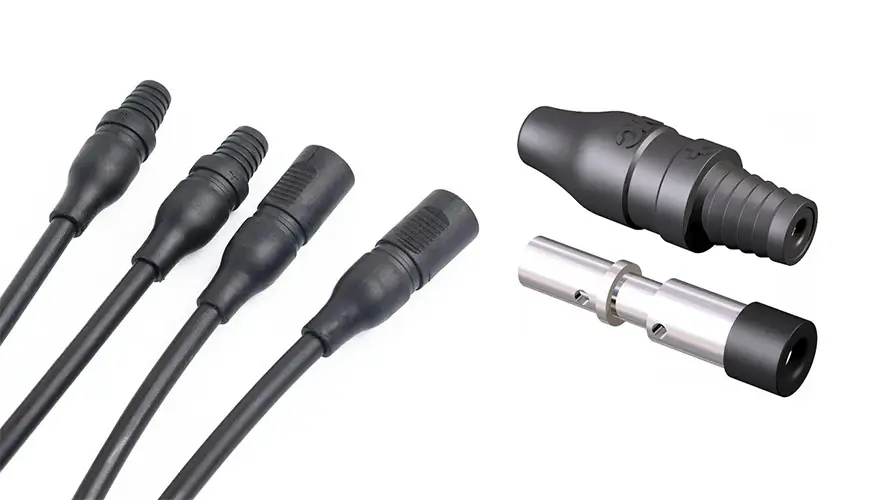

Tyco Connectors
Tyco connectors, known for their robust construction, are engineered to meet the demands of large-scale solar installations. These connectors typically offer higher ratings for voltage and current, and are built to provide a high degree of reliability under extreme environmental conditions. Tyco connectors often feature innovative designs that minimize resistance and maximize efficiency, ensuring optimal performance of solar panels especially in utility-scale installations. Their rugged design makes them particularly suitable for installations in areas with extreme weather conditions, providing a reliable solution for long-term energy projects.


Radox Connectors
Radox connectors are designed with an emphasis on durability and efficiency. Manufactured using high-quality materials that resist UV rays and extreme temperatures, Radox connectors are ideal for outdoor applications where exposure to harsh environmental conditions is a concern. These connectors are also known for their flexibility and excellent aging characteristics, which contribute to a longer lifespan and reduced maintenance costs. Radox’s design typically ensures a tight, waterproof seal, which prevents moisture ingress and ensures consistent performance over the lifetime of the solar installation.


Amphenol Connectors
Amphenol connectors are high-performance connectors that are used in both residential and commercial solar power systems. Known for their high conductivity and corrosion-resistant properties, Amphenol connectors are designed to meet strict industry standards for safety and performance. These connectors often feature quick-snap lock mechanisms that allow for easy yet secure connections, facilitating faster installation and maintenance. Ideal for applications requiring high power handling and minimal power loss, Amphenol connectors are a reliable choice for enhancing the efficiency and reliability of modern solar power systems.


Choosing the Right Solar Connector
Selecting the appropriate solar connector is critical for ensuring the efficiency, safety, and longevity of your solar power system. Various factors influence this decision, including the specific requirements of the solar panels, the environmental conditions, and the overall design of the system. Below are some key considerations to keep in mind when selecting solar connectors.
Compatibility Issues
The first step in choosing the right solar connector is to ensure compatibility with the existing components of your solar system, particularly the solar panels and the inverter. Connectors must match the type and size specified by the component manufacturers to ensure a secure and efficient connection. Using incompatible connectors can lead to poor connections, increased resistance, and potential safety hazards. It’s also important to consider the compatibility of the connectors with the mounting system and the wiring setup, as these can affect the ease of installation and maintenance.
Voltage and Current Requirements
Solar connectors must be capable of handling the voltage and current that your system produces. This involves checking the maximum voltage and current ratings of the connectors and ensuring they align with or exceed the system’s requirements. Using connectors that cannot support the system’s voltage and current can lead to overheating, power loss, and potential failure of the solar installation. Always verify the electrical specifications of the connectors against the system’s output characteristics to ensure optimal performance and safety.
Durability and Certification
The durability of solar connectors is crucial, particularly for installations in harsh environmental conditions. Connectors should be robust enough to withstand factors such as UV radiation, temperature extremes, moisture, and mechanical stresses. Look for connectors that are certified by recognized standards organizations. Certifications such as TUV, CE, and UL indicate that the connectors have been tested and meet specific safety and performance standards. These certifications are a testament to the connector’s quality and reliability, giving you peace of mind that they will perform well over the lifespan of your solar system.
Ease of Installation and Maintenance
Consider how easy it is to install and maintain the connectors. Some connector types offer tool-free installation, which can significantly speed up the setup process and reduce labor costs. Others might require specific tools and can be more labor-intensive. The design of the connector also affects maintenance; connectors that are easier to disconnect and reconnect are preferable for systems that require frequent maintenance or expansion.
Installation Tools Needed
Proper installation of solar connectors is essential for the performance and safety of a solar power system. Here are detailed tips and guidelines to follow when installing solar connectors to ensure they function optimally and safely.
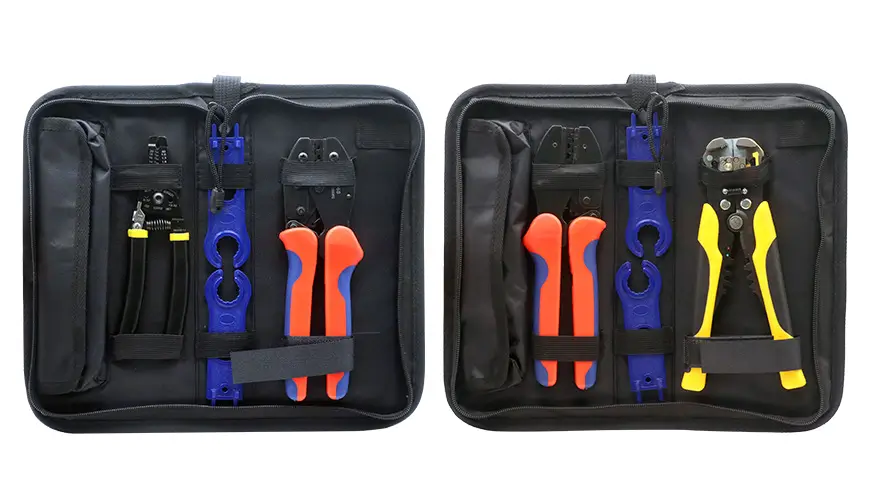

Before beginning the installation, ensure you have all the necessary tools. This typically includes:
Solar Crimping Tool: Specifically designed for crimping solar connectors, ensuring a tight and secure connection.
Wire Strippers: Used to remove the insulation from the wiring without damaging the conductor.
Cable Cutters: For cutting cables to the required length.
Spanners or Wrenches: Often needed for tightening connections, especially in mounting structures.
Screwdrivers: Required for tightening terminals in junction boxes or inverters.
Multimeter or Voltage Tester: Essential for testing connections to ensure they are secure and that there is no risk of electrical shorts.
Having the right tools not only makes the installation easier but also helps in achieving a reliable and efficient solar power system.
Conclusion
In the quest for sustainable and efficient energy solutions, the selection and installation of the right solar connectors are pivotal. Throughout this article, we have explored various types of solar connectors, each with unique features and suited to different applications. From the universally embraced MC4 connectors known for their robustness and ease of use, to the specialized Amphenol connectors designed for large-scale solar operations, the choice of connector has a profound impact on the overall performance and reliability of solar power systems.
We’ve delved into the considerations necessary for choosing the appropriate connectors, highlighting the importance of compatibility, electrical requirements, durability, and ease of installation. These factors ensure that the solar system operates at its optimum, with minimal risk and maximum efficiency. The installation tips provided aim to assist both novice and experienced installers in setting up connectors correctly, emphasizing the importance of using the right tools and techniques to secure safe and effective connections.
As solar technology continues to evolve, the development of more advanced and efficient connectors will undoubtedly follow. Staying informed about these advancements will enable system designers and owners to make better choices, enhancing the capabilities of solar installations and pushing the boundaries of renewable energy technology.
FAQ`s.
What are the most durable solar connectors?
The durability of solar connectors depends on their design and the materials used in their construction. MC4 connectors are widely regarded as highly durable due to their robust build and resistance to various environmental factors such as UV radiation, water, and extreme temperatures. Radox and Amphenol connectors are also known for their durability, especially in harsh environmental conditions. When looking for durable connectors, seek those with high-quality, UV-resistant materials and certifications that attest to their longevity and performance under stress.
How often should solar connectors be inspected?
Solar connectors should be inspected at least once a year to ensure they remain in good condition and function properly. More frequent inspections might be necessary in environments with extreme weather conditions or where connectors are exposed to high levels of dust or mechanical stress. During inspections, look for any signs of corrosion, loose connections, or damage to the insulation and replace any faulty components immediately to maintain system safety and efficiency.
Can different types of solar connectors be mixed in a setup?
Generally, it is not recommended to mix different types of solar connectors within the same installation due to compatibility and safety issues. Using connectors from different manufacturers or of different types can lead to poor connections, increased electrical resistance, and potential safety hazards. Always use connectors that are compatible with each other and designed to work together as specified by the manufacturer.
What certifications should I look for in solar connectors?
When selecting solar connectors, look for certifications that ensure they meet industry standards for safety and performance. Common certifications to look for include:
TUV: Demonstrates that the product meets essential health and safety requirements.
UL: Indicates safety and reliability as tested by Underwriters Laboratories.
CE: Shows compliance with European health, safety, and environmental protection standards.
These certifications help assure that the connectors are of high quality and suitable for use in solar installations.
How do advancements in connectors influence solar efficiency?
Advancements in solar connector technology can significantly influence the efficiency and safety of solar power systems. Innovations often focus on reducing electrical resistance, enhancing durability, and improving ease of use. For instance, newer connectors might feature better locking mechanisms, lower contact resistance, or smarter designs that allow for real-time monitoring and management of electrical systems. By optimizing the connection points within the system, these improvements can lead to more efficient energy transfer, reduced power loss, and overall enhanced system performance.
Derek Ke
Hi, I’m Derek Ke, founder of Moreday.com, an expert in solar-protected electrical products and electric vehicle charging.
Over the past 15 years, we have helped nearly 500 customers (such as farms, residential, industrial, and commercial) in 60 countries solve new energy and green power problems. We aim to share more knowledge about solar power generation and new energy with everyone so that green electricity can enter thousands of households.







